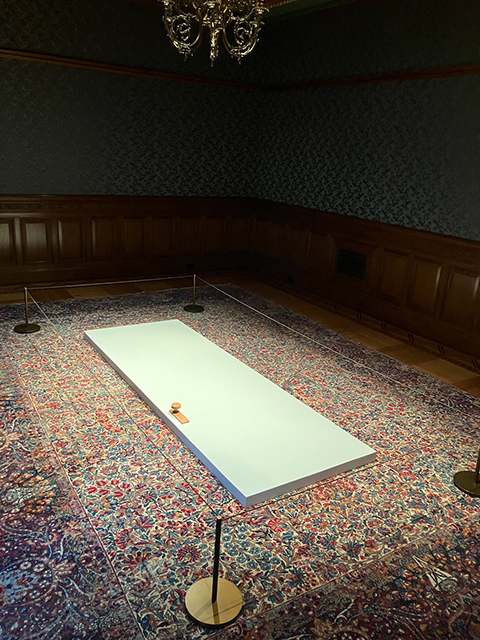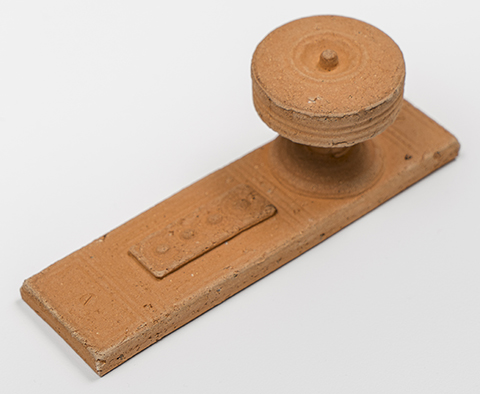Industry of the Ordinary address issues of visibility in a mansion from the original Gilded Age.



In 1871, the Great Chicago Fire laid waste to over three-square miles of the city, resulting in the loss of nearly three hundred lives
and the destruction of over 18,000 structures.
This included the Nickerson family original residence,
which once stood in the place of the Driehaus Museum,
for which this work was created.
A year later, as a precaution, local ordinance required
new constructions to be made of brick or stone.
Eager to find plentiful and affordable clay,
builders began to excavate the bed of the Chicago River
to make the bricks needed to build the new Nickerson Mansion.
Hidden under the opulent veneer of the now-Driehaus Museum
are the original Chicago Common Bricks that were used
to build the foundation. For this work,
IOTO 3D scanned a brass doorknob from one of the doors
that separates the family spaces from the servants' quarters,
creating a duplicate composed of clay taken from the Chicago River bed.
Placed on a prone facsimile of the door to which the original belongs,
the door that led to the servants' quarters,
this object suggests a trapdoor between "upstairs" and "downstairs."
Palimpsest thus gestures at the entwined histories of materiality and labor
that often become invisible in the elegant spaces
of mansions and other grand buildings.
Industry of the Ordinary would like to thank the following for their invaluable assistance in the production of this work: H Schenck, Allyson Reza, Ben Stagl,
and especially Matthew Groves.
Thanks also to curator Giovanni Aloi, and the entire staff at the Driehaus Museum.
More information about this project here.
|

